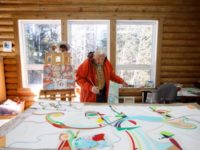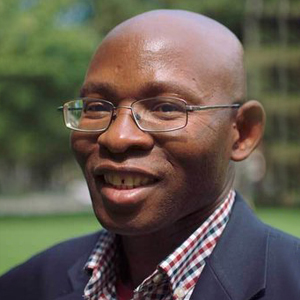Rethinking copyright for Indigenous creative works
As it embarks on another five-year periodic review of the Copyright Act, Canada has an opportunity to reflect on its copyright regime in light of the gaps that exist between it and Indigenous creative works. Indigenous creative works refer to myriad forms, manifestations, or expressions of Indigenous cultural heritage and identity, ranging from stories, folklore and songs, to dances, rituals, symbols, protocols and practices. These collectively link Indigenous peoples with their land, ecological orientation and worldviews, as well as their past, present and future.
For most Indigenous peoples in Canada and across the world, intellectual property rights (IPRs), including copyright, patents, trademark, and designs, remain a highly problematic option for strengthening or protecting their creative works. This is true for a number of reasons, a few of which I will note here.
First, the focus of traditional Western IPR system is far too narrow. As a market economic model of knowledge governance with an emphasis on the commercialization of creative endeavours, IPRs fail to accommodate the complex, holistic, cultural and spiritual essences of Indigenous creativity.
Second, IPRs’ bias toward the individual as “creator” does not reflect the communal nature of Indigenous creativity, where cultural knowledge and cultural expressions are produced and held collectively for the benefit of all.
Third, the formal and prescriptive forms of IPRs common to Western systems, such as term limits on the length of copyright protection, and the protection of material or tangible expressions, are fundamentally incompatible with the intangible essence and spirituality that undergird Indigenous creativity.
The open-ended and overlapping nature of the sites for Indigenous creativity makes it evident that they cannot be pigeonholed into one compartmentalized IPR box. For example, a piece of Aboriginal artwork can be a sacred, secret or even widely diffused design, and at the same time the expression of an idea. Depending on the context, the same — or another — piece of work or design within the Aboriginal creative repertoire could be used to promote a particular product in the marketplace. An Aboriginal creative work could also serve as a symbolic representation of a ritualized cultural practice or ceremonial protocols. And if the work is made from a natural resource that is indigenous to an Aboriginal community, it may reflect aspects of traditional medicine and, by extension, a form of traditional or Indigenous knowledge.
Some of these examples can be characterized as literary and artistic works, and the various forms in which they can be expressed and/or “fixated” (writing, recording, digitization, performance, photographs, painting, drawing, or carving), make them subject to copyright claims under the Copyright Act.
For the most part, only those who are able to undertake the process of transforming a creative work into a tangible/material form (for example, photographers, writers, painters, carvers or compilers) can claim copyright. But how does this function when the creative work in question is an Aboriginal song, dance or story? In a 2016 report the Canadian Association of University Teachers called attention to the Maliseet First Nation’s experience with Laszlo Szabo, a University of New Brunswick professor who recorded Maliseet First Nation’s stories from the elders and obtained a copyright to those recordings pursuant to the Copyright Act. The situation resulted in a lengthy legal battle (see Andrea Bear Nicholas’ article on the topic).
These and other gaps in IPRs, and copyright in particular, have resulted in the use of copyright by non-Indigenous peoples as an instrument for cultural appropriation that target Indigenous creativity and Aboriginal cultural heritage. The controversy surrounding the Cowichan sweater or an Inuit protection parka and their reproduction by retailers without acknowledgment, or the Inuksuk logo used by the Organizing Committee of the 2010 Winter Olympics in Vancouver, are other well-known examples of the pressures over cultural appropriation that Indigenous peoples regularly face.
The Copyright Act is a set of tools animated by particular Western understandings of ownership and property that are alien to Indigenous peoples and cultures.
However, there is nothing in the Copyright Act that forbids Indigenous peoples from taking advantage of the Act’s provision to protect indigenous literary and artistic work per se. The real problem lies is in the fact that colonial copyright laws simply do not meet or “fit” the understandings and expectations of Indigenous creators and knowledge holders. The Copyright Act is a set of tools animated by particular Western understandings of ownership and property that are alien to Indigenous peoples and cultures, as cases in several jurisdictions, most notably Australia, have repeatedly affirmed.
As a pragmatic matter, when Indigenous peoples resort to copyright law for protection of their literary and artistic creations, they find that these protections fall short, because more often than not they fail to account for the intangible essences, spirituality or symbolism – not to mention the collective communal and transgenerational interests – that are attached to those works. As well, Indigenous copyright claim commits the claimant to a 50-year term limit for copyright, even when most Indigenous creative works are presumed to be eternal by their very nature, with an indefinite tenure.
In some respects, the current Copyright Act does have some provisions that have peripheral ramifications for the protection of Indigenous creativity. I will cite a few examples. First, the Act recognizes performers’ rights, which is a form of copyright limited to performances. The latter are the conventional medium for delivering rituals, songs, dances, incantations, ceremonies, etc., as pieces of Indigenous creativity and traditional cultural expressions.
Second, the Act provides for moral rights, which are residual rights that continue after expiration of the copyright. Moral rights safeguard the integrity of a creative work as integral to the reputation of the creator.
Third, the Act refers to the idea of collective interests in the production of copyright works.
While these three examples may reflect, to some extent, the sensitivity of the Copyright Act with regard to Indigenous creativity, they do not raise any high hopes. Performance rights, like copyrights, are subject to a term limit; moral rights, even though not subject to a term limit, are always associated with a specific copyright. Finally, the Act’s reference to collective interests in copyright is limited to the collective administration of copyright and the idea of collective works. They are neither directly relevant nor equivalent to the communal nature or the idea of collective ownership and collaborative production of Indigenous creative works.
Making no direct reference to Aboriginal peoples, traditional knowledge or other relevant expressions that designate indigenous creativity, it is obvious that the architecture of current Copyright Act is not designed with Indigenous creativity in mind. The fundamental pillars and principles of the copyright jurisprudence and the Copyright Act bear evidence of its alienation from Indigenous creativity. The features of the current copyright regime are incurably Eurocentric and colonial. They stand in sharp contrast to the alternative philosophy of knowledge production and governance that animates Indigenous creativity and worldviews.
Given these fundamental gaps, the option of reviewing or re-imagining that Act in order to reconcile it with the nature of Indigenous creativity will be no easy task. As a preliminary matter, Canada can and should take inspiration from the UNESCO treaty framework, where aspects of cultural heritage are recognized as rights that can be protected in perpetuity. Such an approach parallels how Indigenous peoples define or conceive their creative repertoire, which they also link to their self-determination.
Other bodies of legal rights articulated in the United Nations Declaration on the Rights of Indigenous Peoples (UNDRIP), recently endorsed by the Trudeau government, point to a special status for Indigenous creativity. UNDRIP sits alongside other national laws and practices, including the Charter and related case law, in requiring the proactive involvement of Indigenous peoples in matters that affect their rights and interests. The Assembly of First Nations has voiced its reservations about IPRs, including copyright, as a viable pathway to protect indigenous knowledge and creativity. The Australian Aboriginal lawyer Terri Janke has explored Australia’s use of special laws to protect an overlapping range of Indigenous creative works in that country. Australia’s most recent initiative is the 2016 Aboriginal Heritage Act, enacted by the state of Victoria.
Any attempt to re-think the Copyright Act or explore creative legislative solutions to accommodate the protection of Indigenous creativity must involve frank consultation with Indigenous peoples. At the very least, it is possible to halt the use of copyright as a tool of cultural appropriation to the detriment of Indigenous peoples. This can be done though an elaborate identification of detailed exemptions against the granting of copyright (and even other IPRs, such as trademarks and designs) on categories of literary and intellectual expressions involving aspects of indigenous creativity, knowledge systems and cultural symbols, as a starting point. Further, as the Maliseet First Nation’s experience and several others show, it is also possible to fill those gaps by developing a more accountable ethics regime through special protocols on Aboriginal research that tackle the issue of cultural appropriation by researchers and other outside interests.
This article is part of the Reviewing Canadian Copyright Policy special feature.
Photo: Artist Alex Janvier works at his studio in Cold Lake First Nations 149B Alta, on Wednesday February 8, 2017. Alex Janvier is a pioneer of contemporary Canadian aboriginal art in Canada.






